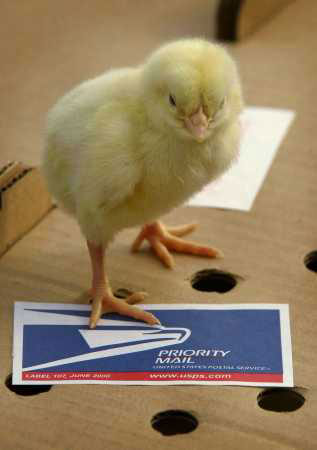
By ERIK ECKHOLM
Published: July 14, 2010 in the New York Times
Multimedia
Todd Heisler/The New York Times
Above is an existing mining operation, adjacent to the Spruce 1 site, which is to the upper left of the cleared areas. More Photos »

The New York Times
The population of Blair, near the Spruce 1 site, has dwindled to 60. More Photos »
The Army Corps of Engineers approved a permit in 2007 to blast 400 feet off the hilltops here to expose the rich coal seams, disposing of the debris in the upper reaches of six valleys, including Pigeonroost Hollow.
But the Environmental Protection Agency under the Obama administration, in a break with President George W. Bush’s more coal-friendly approach, has threatened to halt or sharply scale back the project known as Spruce 1. The agency asserts that the project would irrevocably damage streams and wildlife and violate the Clean Water Act.
Because it is one of the largest mountaintop mining projects ever and because it has been hotly disputed for a dozen years, Spruce 1 is seen as a bellwether by conservation groups and the coal industry.
The fate of the project could also have national reverberations, affecting Democratic Party prospects in coal states. While extensive research and public hearings on the plan have been completed, federal officials said that their final decision would not be announced until late this year — perhaps, conveniently, after the midterm elections.
Environmental groups say that approval of the project in anything like its current form would be a betrayal.
“Spruce 1 is a test of whether the E.P.A. is going to follow through with its promises,” said Bill Price, director of environmental justice with the Sierra Club in West Virginia.
“If the administration sticks to its guns,” Mr. Price predicted, “mountaintop removal is going to be severely curtailed.”
Coal companies say politics, not science, is threatening a practice vital to local economies and energy independence. “After years of study, with the company doing everything any agency asked, and three years after a permit was issued, the E.P.A. now wants to stop Spruce 1,” said Bill Raney, president of the West Virginia Coal Association. “It’s political; the only thing that has changed is the administration.”
While the government does not collect statistics on mountaintop mining, data suggest that it may account for about 10 percent of American coal output, yielding 5 percent of the nation’s electricity. The method plays a bigger economic role in the two states where it is concentrated, Kentucky and West Virginia.
The proposal to strip a large area above the home of 70-year-old Jimmy Weekley, Pigeonroost Hollow’s last remaining inhabitant, was first made in 1997 by Arch Coal, Inc., of St. Louis. The legal ups and downs of Spruce 1 have come to symbolize the broader battle over a method that produces inexpensive coal while drastically altering the landscape.
Spruce 1 started as the largest single proposal ever for hilltop mining, in which mountains are carved off to expose coal seams and much of the debris, often leaking toxic substances, is placed in adjacent valleys.
After years of negotiations and a scaling back of the mining area to 2,278 acres, from its original 3,113 acres, the Spruce 1 permit was approved by the Army Corps of Engineers in 2007 and limited construction began. But this spring, the E.P.A. proposed halting the project.
The announcement caused an uproar in West Virginia. The E.P.A. held an emotional public hearing in May and stopped accepting written comments in June. Arch Coal has objected publicly, but did not respond to requests to comment for this article.
The Obama administration’s E.P.A. has already riled the coal companies by tightening procedures for issuing new mining permits and imposing stronger stream protections. But environmental groups were worried in June, when the agency approved a curtailed mountaintop plan in another site in Logan County, W.Va. Now, as negotiations between the E.P.A. and Arch Coal continue, the Spruce 1 battle is being closely watched as a sign of mountaintop mining’s future.
Feelings run high in the counties right around the project area.
“Spruce 1 is extremely important to all of southern West Virginia because if this permit is pulled back, every mine site is going to be vulnerable to having its permits pulled,” said James Milan, manager of Walker Machinery in Logan, which sells gargantuan Caterpillar equipment.
The loss of jobs, Mr. Milan said, would have devastating effects on struggling communities.
Maria Gunnoe, an organizer for the Ohio Valley Environmental Coalition and a director of SouthWings, which organizes flights to document environmental damages, said that if Spruce 1 went forward, “it’s going to mean the permanent erasure of part of our land and our legacy.”
“We can’t keep blowing up mountains to keep the lights on,” said Ms. Gunnoe, a resident of nearby Boone County who has received death threats and travels with a 9 millimeter pistol.
Mr. Weekley, whose house is in sight of the project boundary, remembers the day in 1997 when he decided to fight it. Nearby mining under previous permits had filled his wooded valley with dust and noise.
“You couldn’t see out of this hollow,” he recalled. “I said, Something’s got to be done or we’re not going to have a community left.”
He and his late wife became plaintiffs in a 1998 suit claiming that the project violated environmental laws. A ruling in their favor was overturned, setting off litigation that continues.
Mr. Weekley said that he had rejected offers of close to $2 million for his eight acres and that he had seen the population of the nearby town of Blair dwindle to 60 from 600, with most residents bought out by Arch Coal.
A rail-thin man who enjoys sitting on his porch with a dog on his lap, Mr. Weekley uttered an expletive when told that coal industry representatives, including Mr. Raney in an interview, referred to the upper tributaries filled in by mining as “ditches” that can be rebuilt. In fact, some of the streams to be filled by Spruce 1 are intermittent, while others, including Pigeonroost Creek, flow year-round.
“I caught fish in that stream as a child, using a safety pin for a hook,” Mr. Weekley said. “If they get that permit, there won’t be a stream here.”
In documents issued in March, the E.P.A. said the project as approved would still smother seven miles of streambed.
Filling in headwaters damages the web of life downstream, from aquatic insects to salamanders to fish, and temporary channels and rebuilt streams are no substitute, the agency said. The pulverized rock can release toxic levels of selenium and other pollutants, it noted.
The effects of Spruce 1 would be added to those of 34 other past and present projects that together account for more than one-third of the area of the Spruce Fork watershed, the agency said.
The debate over Spruce 1 and other mountaintop mine permits has been a source of division and anguish among local residents.
Michael Fox, 39, of Gilbert, is a mine worker who like many other miners here thinks the objections are overblown. “I have three kids I want to send to college,” Mr. Fox said.
One former mountaintop miner who says he now regrets his involvement is Charles Bella, 60. He is one of the remaining residents on Blair’s main street, along the Spruce Fork, which is fed in turn by Pigeonroost Creek.
“I know it put bread on my table, but I hate destroying the mountains like that,” Mr. Bella said.



















